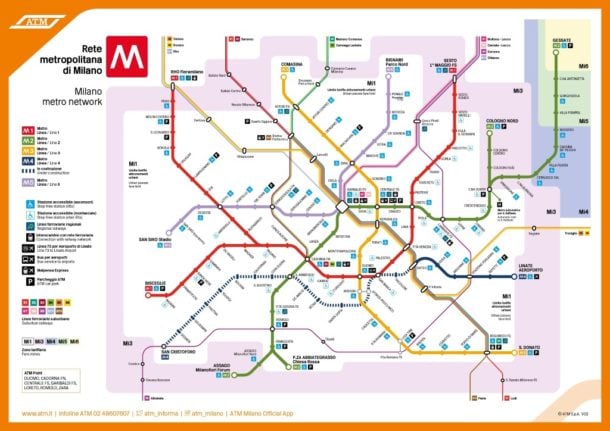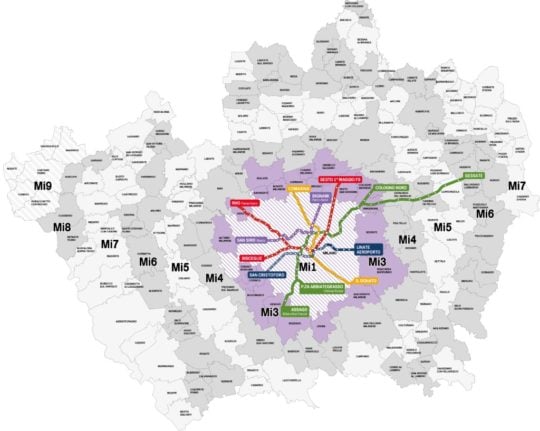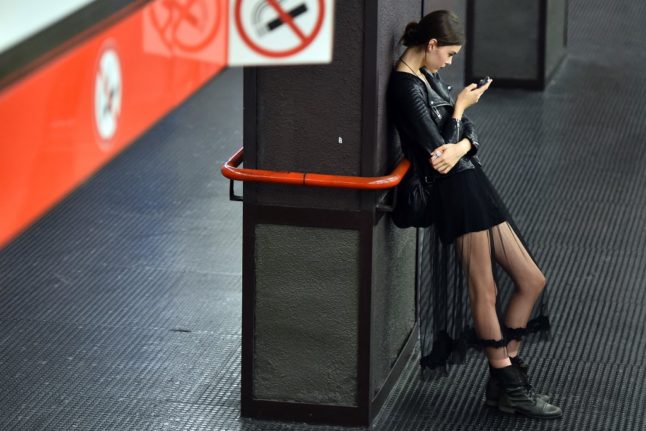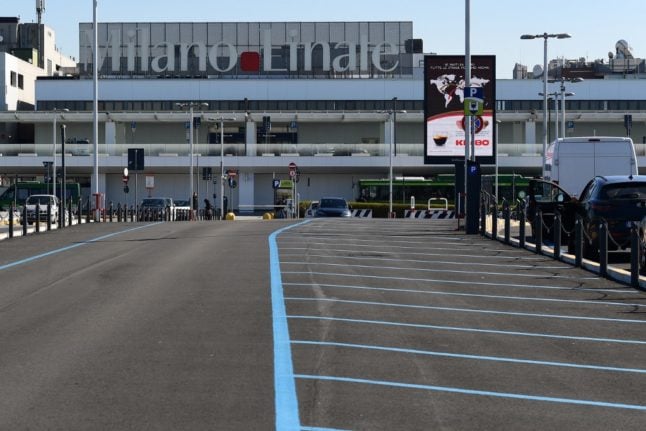Metro, bus or tram: Milan’s tickets, passes and apps explained
Public transport in Milan is efficient, reliable and relatively cheap.
However, navigating the dense network of trams, buses and metro lines servicing the city might not exactly be a piece of cake at first, especially for foreign nationals.
So here’s a guide to help you get to grips with Milan’s public transport system sooner rather than later.
Overview
Milan’s urban area is serviced by four metro lines (M1, M2, M3, M5) – a new one, M4, is currently under construction and is expected to be fully operational by late 2024 – and over 130 bus routes and 19 tram lines.

All of these services are conveniently managed by a single operator, ATM (Azienda Trasporti Milanesi). This means that a single ticket or pass will allow you to hop on any given means of transport in the city and freely switch from one to the other without additional costs, provided, of course, that you haven’t exceeded your ticket’s validity time.
Aside from your ticket’s duration, you should also always pay attention to the city’s fare zones.
READ ALSO: What are the best Milan neighbourhoods for international residents?
Standard tickets and passes only cover the three first zones (Mi1 to Mi3), so a journey to any location outside of those zones (Mi4 to Mi9) requires a different ticket or the addition of a supplementary fare to your pass (tariffa integrativa).
Be advised: travelling on the wrong ticket will cost you dearly as fines for transgressors start at 120 euros. Also, ticket inspectors in Milan are famously unreasonable.
Tickets and passes
ATM offers a wide range of tickets and passes to customers, so you’ll never be short on options. Here’s a brief overview.
Standard single ticket (zones Mi1-Mi3): A single ticket is valid for 90 minutes and allows for unlimited journeys within the given time window and, of course, only within the relevant fare zones. Each ticket costs 2.20 euros.
Daily ticket (zones Mi1-Mi3): A daily ticket will get you unlimited journeys within a 24-hour window for just 7.60 euros. The time window starts when first validating the ticket.

Three-day ticket (zones Mi1-Mi3): A three-day ticket will cost you 13 euros. As for daily tickets, the time window starts when validating for the first time.
10-ticket bundle: A 10-ticket bundle will set you back 19.50 euros. Each ticket is valid for 90 minutes.
Monthly and annual passes: While tickets are the best option for visitors, getting a monthly or yearly pass would be the best course of action for a resident.
Monthly passes for Milan’s urban area cost 39 euros, whereas annual urban passes go for 330 euros. In both cases, a number of generous discounts are available for under-30s, low-income residents and the elderly.
READ ALSO: Five things you’ll only know if you live in Milan
It’s worth noting that, unlike standard tickets, monthly or yearly passes must be loaded onto a personal ATM travel card. To get one, you’ll have to submit a request through the relevant ATM web page and then ask for the card to be delivered to your address or pick it up yourself at one of the given metro stations.
Where and how can I buy tickets?
From paper tickets to contactless payments, there’s no shortage of ways to pay your public transport fare in Milan. Here are your options.
Paper tickets
They might not be the most eco-friendly option but paper tickets are still around in Milan.
The best way to get them is from a self-service machine at your nearest metro station – card payments are accepted – though you can also find them at a number of edicole (newsagents) or tabacchini (tobacco stores) across the city. A full list of authorised sellers is available here.
READ ALSO: Moving to Italy: How much does it really cost to live in Milan?
Validating paper tickets is fairly straightforward as you’ll only have to insert the ticket in the appropriate slot (you’ll find one on every metro entrance gate and on brightly-coloured boxes on buses and trams) and wait for it to be stamped.

Milan has four metro lines but a new one is currently under construction. Photo by Gabriel BOUYS / AFP
However, you should keep in mind that you’re meant to validate your ticket every time you switch to a different means of transport. Also, when using the metro, you’ll need the ticket to both get in and out of the underground, so make sure you don’t lose it during the journey.
RicaricaMI card
All types of tickets except monthly or yearly passes can be loaded onto a RicaricaMI travel card.
The card can be bought at any ATM point in the city or at any of the above-mentioned authorised sellers.
This is a good alternative to paper tickets, not least because you’ll only have to tap it against the given reader to validate it.
ATM app
The quickest (and possibly the easiest) way to get a ticket is through the ATM Milano app.
No registration is required and you can pay for tickets with your credit card, PayPal or Satispay.
READ ALSO: Six essential apps that make life in Milan easier for foreign residents
After validating your ticket, a QR code will appear on your screen and you’ll have to scan this to get through the metro barriers. However, scanning isn’t required on buses and trams.
The app can be downloaded here.
Contactless
Finally, all metro lines and three bus lines (56, 70 and 73) allow travellers to pay their fare via a contactless bank card – Mastercard, Visa, American Express, Maestro e VPay are all accepted – or any other contactless device (phone, smart watch, etc.).
You’ll always be charged the cheapest available fare (find out more about this here) and there are no extra costs or commissions.

ATM’s bus 73 connects central Milan to Linate Airport. Photo by Miguel MEDINA / AFP
That said, ATM recommends that people use the same card (or device) to tap in and out of metro stations so as to avoid being charged twice.
Airport travel
ATM’s bus 73 connects central Milan (Via Gonzaga, behind Piazza Duomo, to be exact) to Linate Airport and a standard single ticket will be enough for the journey.
Naturally, there are other ways to get to Linate, including the Linate Shuttle and several Autostradale coaches, but these are not managed by ATM so you’ll have to get your tickets elsewhere.
As for Malpensa, all services between central Milan and the airport are managed by companies other than ATM.
However, prices are still very affordable: the Malpensa Express costs 13 euros, whereas a one-way journey on the Malpensa Shuttle is 10 euros.
